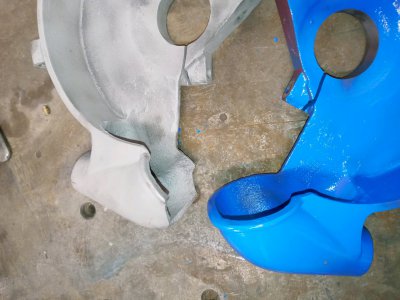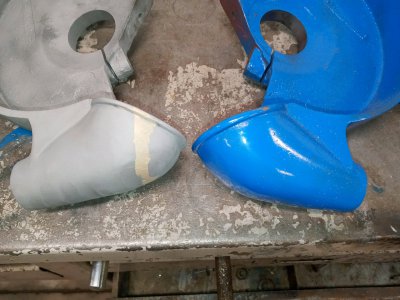- Joined
- Feb 2, 2013
- Messages
- 4,096
A carbon rod of the correct size would be an excellent plug, bronze/brazing alloys won’t stick.
Bevel the crack zones all the way around
Preheat between 300 and 400 degrees F
Braze it up ( Silicon Bronze is excellent)
Allow to slowly cool in sand, vermiculite, ash, under a thermal blanket, or in a preheated bbq
Finish with whatever you choose-sanding, grinding, bead blasting, etc.
Paint
Install
Bevel the crack zones all the way around
Preheat between 300 and 400 degrees F
Braze it up ( Silicon Bronze is excellent)
Allow to slowly cool in sand, vermiculite, ash, under a thermal blanket, or in a preheated bbq
Finish with whatever you choose-sanding, grinding, bead blasting, etc.
Paint
Install




